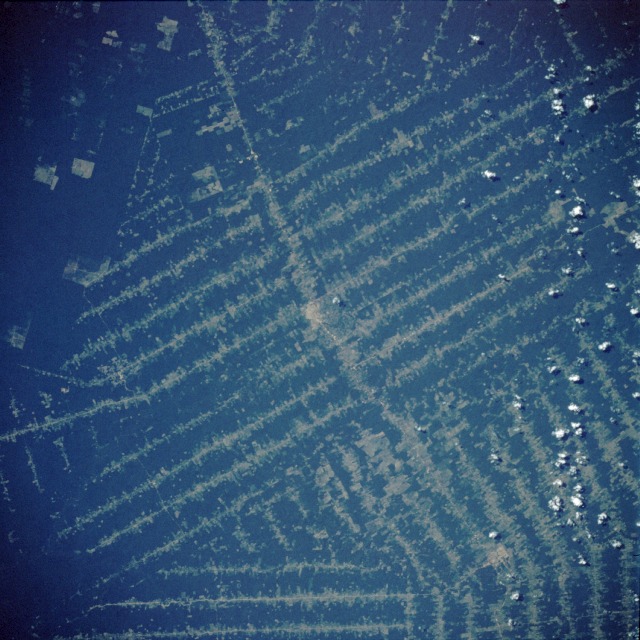Rainforest loss in the Amazon tops 200,000 square miles, new figures from Brazilian government
mongabay.com
May 20, 2005
New figures from the Brazilian government show that 10,088 square miles of rain forest were destroyed in the 12 months ending in August 2004. Deforestation in the Amazon in 2004 was the second worst ever as rain forest was cleared for cattle ranches and soy farms.
|
|||||||||||||||||||||||||||||||||||||||||||||||||||||||||||||||||||
Scientists are concerned that widespread deforestation in the Amazon could have global consequences through species extinction and climate change.
Nearly half the total deforestation last year took place in Mato Grosso state, where rain forests are being converted into large soy plantations. Blairo Maggi, the governor of the state, is world’s single largest soy producer. Soy has become Brazil’s biggest farm export — equal to about $10 billion in 2004 — thanks to a booming market fueled by high demand from China and, as the result of a new variety of soybean developed by Brazilian scientists to flourish rainforest climate, the country is on the verge of supplanting the United States as the world’s leading exporter of soybeans. Each year Brazil is opening up an area of cropland the size of Maryland.
Significant areas of the Amazon are also cleared for cattle pasture. According to The Center for International Forestry Research (CIFOR), in 2003 80 percet of the growth in Brazilian cattle production was in the Amazon region but much of this land clearing is used for land speculation purposes. In Brazil, developers can gain title to Amazon lands by clearing forest and placing cattle on the land. Thus cattle are a vehicle for land ownership in the Amazon.
Environmentalists worry that new infrastructure projects will only fuel further destruction. Typically, roads encourage the expansion of development activities like logging and commercial agriculture while spurring settlement by rural poor who look to the rainforest as free land for substistence agriculture. Satellite data in 2004 showed a marked increase in deforestation along the BR-163 road, a highway the government has been paving in an effort to help soy farmers in Mato Grosso get their crops to export markets. Brazil and Peru have embarked on a similar road project to construct a highway that would link the new agricultural zones of the Amazon to the ports of Peru to feed growing food demand from China.
Since 1978 about 205,000 square miles (531,000 square kilometers) of the Amazon have been destroyed. Studies from NASA suggest that these estimates of Amazon deforestation may be low since some satellite images fail to capture areas degraded by logging and accidental fire. At present, the Amazon covers about 1.6 million square miles (4.1 million square kilometers).
Global environmental role
The Amazon forest plays a key role in the global environment, supplying a portion of the world’s oxygen and locking up massive amounts of carbon. As forest is cut, carbon dioxide is released into the atmosphere contributing to the accumulation of greenhouse gases in the atmosphere. Further, scientists have found that the reduction of forest cover has affected local weather patterns. Less rain tends to fall in deforested areas and scientists fear that continued forest clearing could turn much of the region into savanna. A recent study in Science warned that a prolonged drought in the Amazon could lead to a massive die-off in the world’s largest rainforest.
Home to up to 30 percent of the world’s plant and animal species, including a new species of monkey discovered earlier this year, the Amazon holds a great deal of promise in the development of drugs and other useful products derived from its biodiversity. Through bioprospecting this economic potential is increasingly being realized and a number of pharmaceutical products have been derived from plants in the region. Indigenous populations have tradtional uses for thousands more.
Escalation
The new figures were announced three months after the prominent slaying of American nun Dorothy Stang in February. Stang had been working with the rural poor in Para state when she was gunned down by men with ties to large land developers. In response, the government set aside new protected areas, but many believe that this move will do little to slow forest loss. Some analysts believe deforestation in the Amazon and surrounding regions will continue to escalate as the country looks to expand its exports, especially to the Far East.

The background image shows deforestation associated with the Tierras Bajas project in eastern Bolivia where people have been resettled from the Altiplano to cultivate soybeans. The photo is from NASA’s Earth Observatory. |

